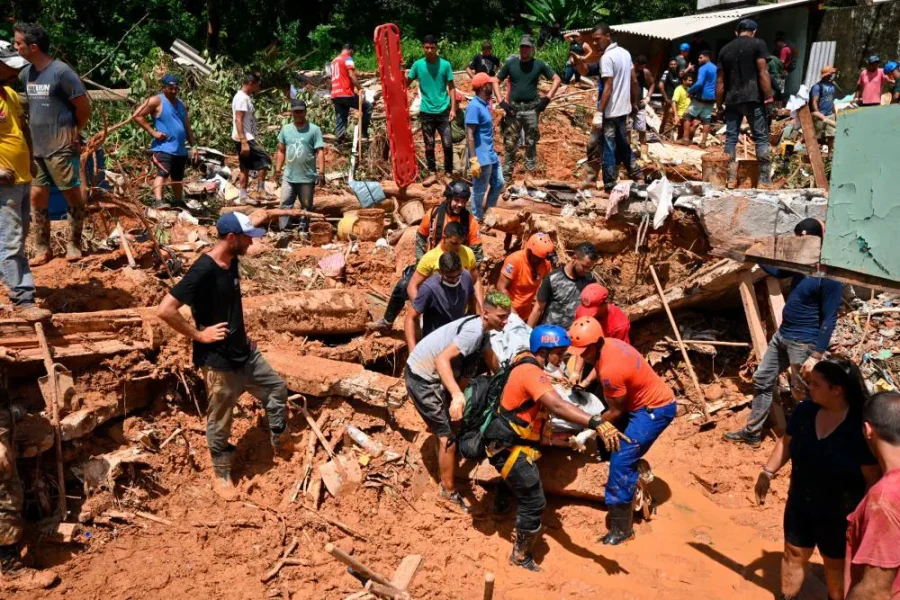Rescuers in southeastern Brazil scrambled Tuesday to find survivors among dozens of people still missing after record rainfalls caused flooding and mudslides that killed at least 46 people over the weekend.
Some 680 millimeters (26 inches) of rain — more than double the expected monthly amount — fell in 24 hours around the popular beach city of Sao Se-bastiao, some 200 kilometers (120 miles) southeast of Sao Paulo.
The downpour was a record for the area, according to the state government, and the Inmet weather service said rains would continue falling in the region this week.
With emergency crews pulling more bodies from the disaster zone Tuesday, authorities issued an alert through Wednesday for the risk of more landslides in the area.
“Search and rescue work continues uninterrupted” after raging rivers of mud, stones and trees razed precarious houses built on slopes, according to the office of Sao Paulo’s governor.
But the wet weather complicated the work of some 1,000 search and rescue personnel, backed by 50 vehicles, 14 helicopters and 53 engineering teams.
Late Tuesday, the governor’s office raised the death toll from 44 to 46 — all in Sao Sebastiao except for one in the seaside resort of Ubatuba.
“We don’t know where the death toll will end,” Sao Paulo Governor Tarcisio de Freitas told AFP after arriving by helicopter to visit the area.
Officially, 38 people are reported as missing, a figure that will likely push the final number of deaths closer to 70, he added.
Authorities said more than 1,730 people had been temporarily evacuated from their homes while at least 760 were left homeless.
Twenty-five people, including six children, were taken to hospital and seven were in a serious condi-tion.
Sao Sebastiao officials set up a tent for a collective wake for victims.
Residents with shovels and hoes cleaned mud out of their homes as heavy vehicles passed by outside to collect debris.
President Luiz Inacio Lula da Silva flew over the holiday zone-turned-disaster area Monday and warned about the dangers of improvised urban con-struction.
An estimated 9.5 million of Brazil’s 215 million people live in areas at high risk of flooding or land-slides — often in impoverished favelas.
With many roads still blocked by boulders and mud, some vacationers were evacuated by boat as intense helicopter traffic continued to and from the most affected areas.
The authorities urged tourists to leave the coastal areas, and Brazilian media reported that some tourists paid as much as 30,000 reais (almost $6,000) for a helicopter ride out.
“There was no way to go anywhere,” said Gabriel Bonavides, who was spending his holiday in a rented house with friends when disaster struck. “We left the car there and had to return by boat,” the 19-year-old law student told AFP. Residents of nearby Juquehy, still shaken by the weekend storm, spent another night in anguish when rains caused fresh landslides early Tuesday. No casualties were reported.—AFP










